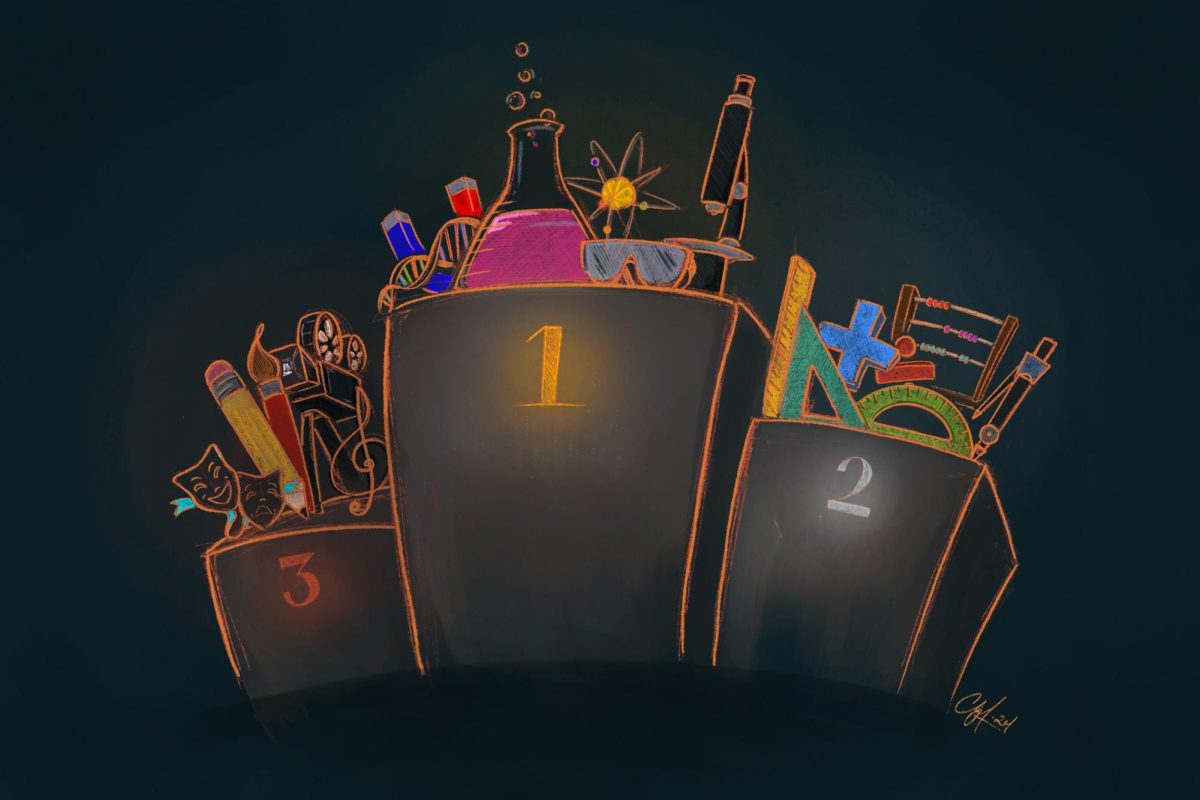Editor’s Note: Before you go running off and trying to brew your own beer, use your head. Making moonshine in your bathtub can lead to serious health, as well as legal problems. We don’t encourage underage drinking.
Sun God is just around the corner. You’ve read the Guardian beer issue and are psyched about getting piss-drunk on Friday, but you’ve got a problem. Either you’re underage and can’t buy beer, or you’re of age, but broke. Either way, this sweet nectar is simply out of your grasp.
Rather than sulking, you should have been planning ahead. If you had actually taken a few moments to think about it, you would have come up with the perfect solution: brewing your own beer.
In addition to having a slew of alcohol at your disposal, you could probably sell a lot of it to beer-hungry freshmen (although we at the Guardian do not condone such things, as stated in the editor’s note) and make yourself a nice profit. Brewing beer could actually turn into quite a lucrative business — just ask Al Capone.
While making beer is a very involved process, this is an attempt to simplify the process and give you a glimpse as to what it takes to brew your own suds.
Preparation
According to John Palmer’s “”How to Brew Your First Beer,”” there are three key things that you must keep in mind throughout the brewing process. These are cleanliness, preparation and good record keeping. Without these, you might as well be drinking rubbing alcohol, because the beer you make will taste awful.
Cleanliness is very important in the brewing process. Since brewing beer involves providing a healthy environment for the yeast to grow and ferment, it also leaves the door wide open for bacteria to form and grow. Lack of cleanliness can lead to entire batches of ruined beer.
Preparation is another key to brewing good beer. This includes having all of the ingredients ready, having your equipment clean and being ready to execute the brewing steps in a timely manner. Leaving the yeast out too long while you wait to clean the fermenter can cause it to go bad.
The final key to brewing a good batch of beer, according to Palmer, is record keeping. The brewer should keep track of the amounts of the ingredients that were used as well as how much time was spent in each process. The purpose of the extensive record keeping is to allow good batches to be duplicated in future endeavors and to learn from bad batches.
Equipment
As nice as it would be to simply be able to look around the house, grab a few items and be ready for brewing, that simply isn’t the case.
Several pieces of equipment must be purchased prior to beginning the brewing process. Again, this goes back to the preparation aspect of brewing.
Three of the biggest pieces of equipment are the airlock, boiling pot and fermenter. The airlock comes in several styles and should be filled to the water line with bleach water. The boiling pot should be stainless steel, ceramic-coated steel or aluminum. It should be able to hold a minimum of three gallons of liquid. The fermenter is a large container. A six-gallon food-grade plastic pail is recommended for beginners (that means you).
Next on the list are two cases of recappable 12-ounce bottles. Heavy glass bottles are recommended. Twist-off caps are not advisable. In addition to the bottles, you should purchase a bottle brush to scrub out the bottles, bottle caps (either standard or oxygen absorbing) and a bottle capper (either a hand capper or a bench capper). You should also purchase a bottle filler, which is a hard plastic, or sometimes metal, tube that has a spring-loaded valve to fill the bottles.
Additionally, you will need to purchase a siphon hose, which is a clear, plastic tubing; a racking cane, which is a rigid, plastic tube with a sediment stand-off; a stirring paddle, which is a food-grade plastic paddle or spoon and a thermometer that has a range of at least 40 degrees Fahrenheit to 150 degrees Fahrenheit.
Ingredients
In order to brew the perfect ale, you will need several different ingredients, including five to seven pounds of hopped pale malt extract syrup, five gallons of water, one to two ounces of hops, one packet of dry ale yeast and three-fourths of a cup of corn sugar.
The malt extract syrup consists of concentrated sugars removed from malted barley. According to Palmer, a rule of thumb is one pound of malt extract syrup per gallon of water to produce a light-bodied beer. The water is very important in the beer-making process. It should be boiled before use to kill any chlorine or bacteria in the water. Brewers should also avoid distilled water since the minerals are what gives the beer flavor and allows the yeast to grow.
Hops comes in two main categories: bittering and aroma. The bittering hops contain more alpha acids, which give the beer its bitter taste. For the purposes of this recipe, bittering hops should be used.
Aside from hops, yeast is the next most important thing in determining the flavor of the beer. There are several different types of yeast, including dry and wet, ale and lager and so on. A dry ale yeast is to be used for this recipe.
The Process
The brewing should start by rehydrating the dry yeast. This is a relatively simple process that involves putting a cup of warm (90 degrees Fahrenheit) boiled water into a sterilized jar that contains the yeast. The jar should be covered in plastic wrap and left for 10 minutes.
After the 10 minutes you should stir in a teaspoon of sugar and then recover the jar and place it in a warm area out of the sunlight. The yeast will be ready after thirty minutes and should be actively churning and foaming.
While rehydrating the yeast, you should begin the brewing process by boiling two and a half gallons of water in a large pot. When the water comes to a boil, remove it from the heat and add the wort while being careful not to let any of it stick to the bottom.
The pot should now be put back in the heat and brought to a boil. You should keep a constant eye on the pot and stir it frequently. It should remain at a boil for an hour.
During the initial stages of the boil (5 to 20 minutes), there might be a foam that forms at the top of the pot, making a smooth surface. This is normal. The only thing to watch out for is it boiling over. In order to keep this in check, you can adjust the heat, or as Palmer suggests, use a spray bottle full of water.
The next stage of the brewing process is a crucial one: the cooling of the wort.
While bacteria will not form at temperatures over 130 degrees Fahrenheit, it is very likely between 80 degrees and 130 degrees. For this reason, the wort must be cooled below 80 degrees Fahrenheit at a rapid pace.
This can be accomplished several ways. Palmer suggests placing the large pot in a tub of ice-cold water circulating around it. Stir the wort while it cools. It should get below 80 degrees Fahrenheit in approximately 20 minutes. The pot may still be warm to the touch, but it will be OK.
Now you should add the remaining 2 1-2 gallons of water to the fermenter and add the wort to that. You should allow it to splash into the fermenter, allowing it to oxidize.
The mixture is now ready to ferment at a temperature between 65 degrees to 75 degrees Fahrenheit.
At this point, you need to take the dry yeast that you rehydrated and add it all into the fermenter with the wort. Instead of placing the airlock on the fermenter, simply apply plastic wrap and shake the fermenter, allowing the wort to mix in with the yeast.
The airlock should then be added and the fermenter and left alone in a protected area like a bathtub. Active fermentation should start within 12 hours.
A constant temperature of approximately 70 degrees Fahrenheit should be maintained. For ale beer, the primary fermentation should be done in approximately three days at that temperature. However, the beer should be left alone for two to three weeks to allow it to go through its final fermentation process.
After this process, you are almost ready to bottle your beer, but first you need to prime it.
This is done by boiling three-fourths of a cup of corn sugar or 1 1-4 cups of dry malt extract into some water and letting it cool. The mixture can then be added into the fermenter and stirred into the beer.
Wait half an hour before siphoning the beer into the bottles.
You should fill the bottles until three-quarters of an inch from the top and cap them. The bottles should be placed out of direct sunlight, in room temperature, for a minimum of one week.
After that, enjoy the sweet nectar that you slaved so hard for. It will all be worth it in the end.
Information for this article was drawn from several sources, including Palmer, www.vinotheque.net/brewing.htm, http://byo.com and http://realbeer. com/spencer.







